February 25, 2021 at 3:41 pm
As temperatures drop well below freezing in our Northeast piece of paradise, Maine Department of Inland Fisheries and Wildlife biologists are heating up with project updates, innovative research, and vital partnerships. From mammals to mayflies, wildlife staff are collecting and analyzing data in a continuous effort to improve and monitor our state’s wildlife populations. Here’s a peek into some of their current work:
Reptile, Amphibian & Invertebrate Group
Butterflies
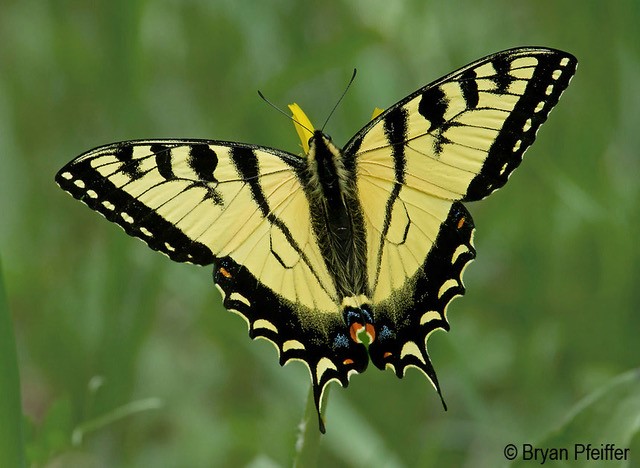
Maine’s 120 butterfly species rank among the state’s most colorful and popular insect groups and are also ecologically important as pollinators and prey to myriad other species from dragonflies to birds. Despite growing concern nationally for pollinating insects, Maine had only a rudimentary knowledge of the state’s butterfly fauna, until recently.
The Maine Butterfly Survey, a statewide citizen-science butterfly atlas, was launched in 2007 and completed its 10th field season in 2016, generating nearly 30,000 new records and new information on species distributions, abundance, and habitat relationships. Among some of the most exciting atlas discoveries were including 12 new state species records and one new U.S. national record — the (short-tailed Swallowtail); All of the records are scientifically valuable and helping biologists to assign conservation status ranks, as well as monitoring and management plans for the state’s most vulnerable species.
One of the penultimate products of the Maine Butterfly Survey is a detailed summary of the biology, distribution, and status of the butterflies of Maine and the adjacent Maritime Provinces of Canada, To this end, a team of biologists from MDIFW, UMaine Farmington, Colby College, Florida Museum of Natural History, and Atlantic Canada Conservation Data Centre are working this winter on finalizing a manuscript for publication by Cornell University Press. In addition to summarizing the science and conservation of butterflies in the Acadian region, we hope this contribution will attract new members of the public to the fascinating world of butterflies, and possibly other invertebrates. Learn more about the Maine Butterfly Survey here.
Turtles
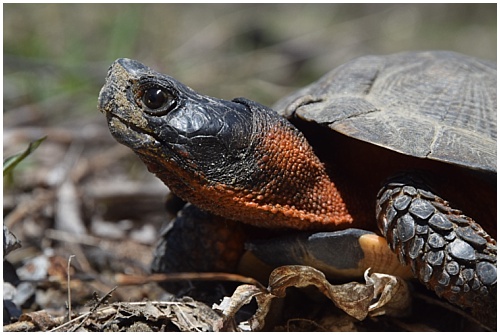
The wood turtle is one of Maine’s rarest reptiles and listed as State Special Concern. Medium-sized (5-8inches) and handsome, with a distinct sculpted shell and orange coloration on its neck and legs, this long-lived species can survive for 58 years or more. For much of the year, wood turtles are found in slow to moderate moving clear-water streams with a predominantly sand or gravel substrate. During late spring and summer, they use the surrounding uplands including forests, floodplains, meadows, and hayfields. From late fall to early spring, they hibernate underwater in sheltered areas of rivers. No other Maine turtle species makes such extensive use of both aquatic terrestrial habitats.
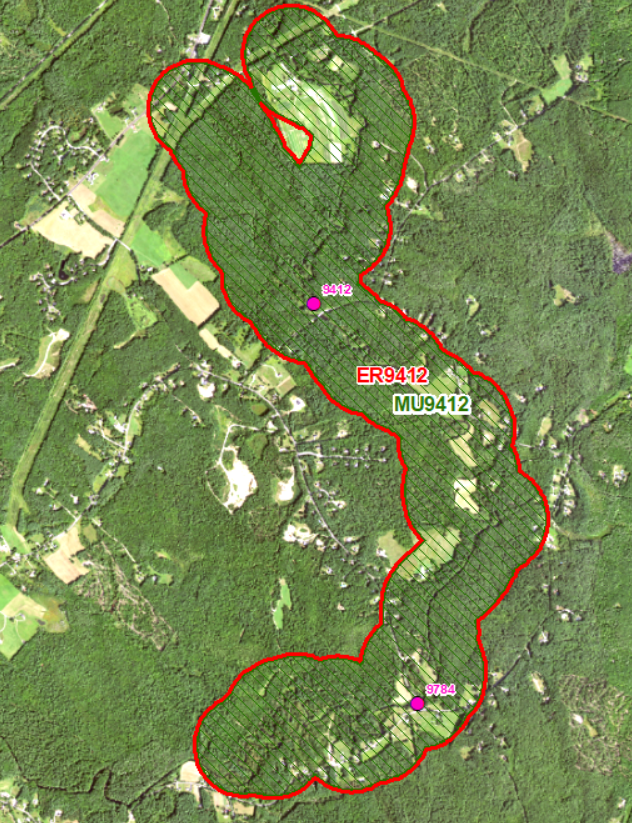
In order to better delineate wood turtle habitat throughout Maine, over 150 wood turtle observations have been remapped with a digital mapping protocol developed by MDIFW’s turtle specialist and members of the habitat group. These new habitat polygons capture both the clear-water streams where turtles mate and overwinter and adjacent uplands habitat that provide crucial foraging and nesting opportunities. Smart polygons such as these, informed by species habitat and movement ecology, do a better job of directing Department and partner resources toward those areas of the landscape that are most meaningful for conservation.
Bird Group
Raptors
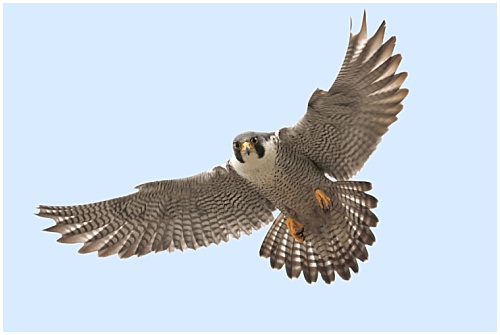
MDIFW’s raptor biologist is collaborating with Maine Department of Transportation to change out game cameras at a couple urban peregrine nest sites, setting up a new nest box (in collaboration with Go Lab, MDOT and the Maine Falconry and Raptor Conservancy), and exploring a local church steeple in hopes of placing a box or nest tray. Peregrine falcon breeding monitoring will begin mid-March and is always looking for people to get involved. Reach out to Erynn Call, MDIFW Raptor Biologist, to participate: erynn.call@maine.gov.
Waterfowl
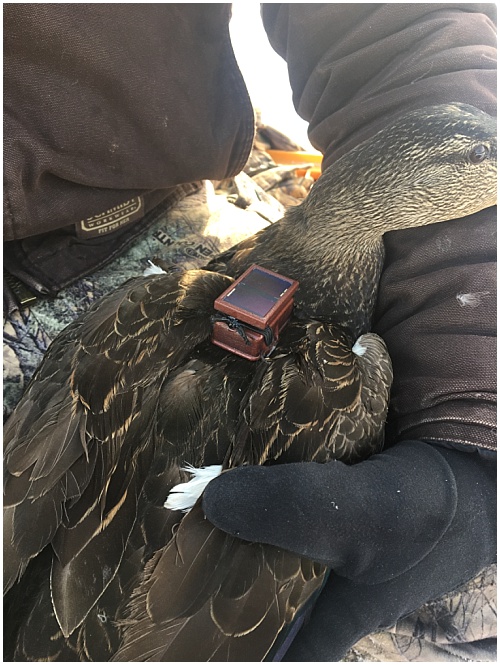
MDIFW’s game bird biologist is working in partnership with the Atlantic Flyway, the U.S. Fish and Wildlife Service Black Duck Joint Venture, and the University of Missouri on a large satellite telemetry project to study the nesting behavior of boreal nesting American black ducks through movement data. Several states are putting a few transmitters out this winter to see how the units perform in a pilot effort. Maine has three units to place on female black ducks captured this winter in the mid-coast area.
Mammal Group
Deer
A team of field researchers is working to deploy GPS collars on white-tailed deer northeast of Baxter State Park this winter. Deer are captured primarily with ground traps, though some nets and darting is also used. MDIFW will monitor the survival of collared deer around the state to better understand what factors influence winter mortality in deer.
Bats

MDIFW biologists survey hibernacula (hibernating sites) in winter to better understand the status of Maine’s five hibernating bat species. Biologists survey hibernacula every 3-5 years to minimize disturbing bats when they need to conserve their energy for hibernating up to seven months (October-April), photographing and recording how many of each species they find, whether there is any evidence of white-nose syndrome, and the location of each bat to reference for future surveys. In addition to old mines and caves, we are learning that bats overwinter in other places that have stable temperatures and high humidity, such as attics, tree cavities, and rock piles within talus slopes
Furbearers
In addition to fur registration, the Department collects biological samples from hunters and trappers for bobcat, fisher, marten and otter that are harvested. Staff compile samples from across the state, record the associated information with each sample (species, sex, town, harvest method, and date), and prepare the samples to ensure they are intact and clean. We partner with other labs to count the cementum annuli of the teeth to age the animals and use tissue samples to accurately determine sex of the bobcats. Biological samples are important to better understand the age and sex structure of the harvest to ensure a healthy, sustainable population.
Bear dens are still being monitored, and moose counted from helicopters. Duck boxes are checked for use, and new turkey projects are falling into place. Mussel survey plans are being laid out while bumblebee atlas volunteers prepare for work. Maine Department of Inland Fisheries and Wildlife biologists are responsible for the management and monitoring of hundreds of species statewide and year-round. The success of MDIFW’s reach is tied to our partnerships with outside organizations, Maine’s devoted residents, and something we all care deeply about: preserving, protecting, and enhancing Maine’s wildlife.
To learn more about research projects and updates, read our Research & Management Report at mefishwildlife.com/wildlifereport